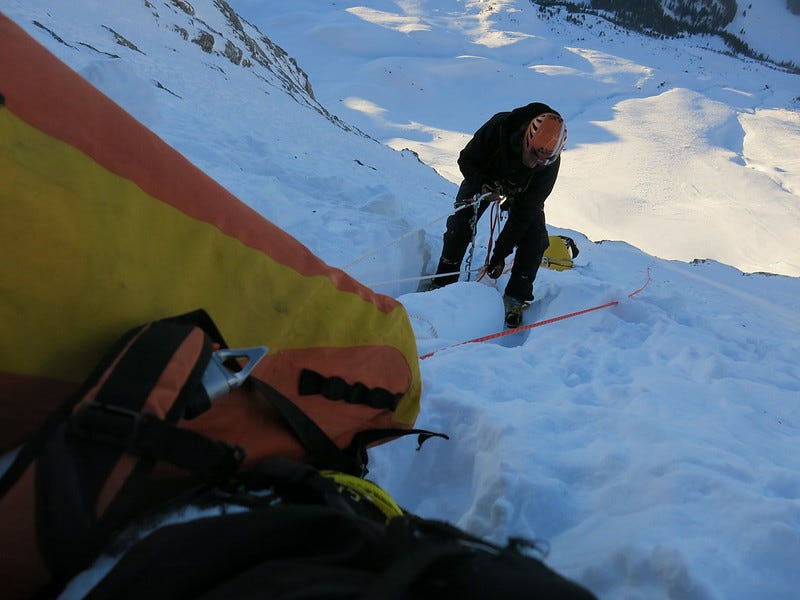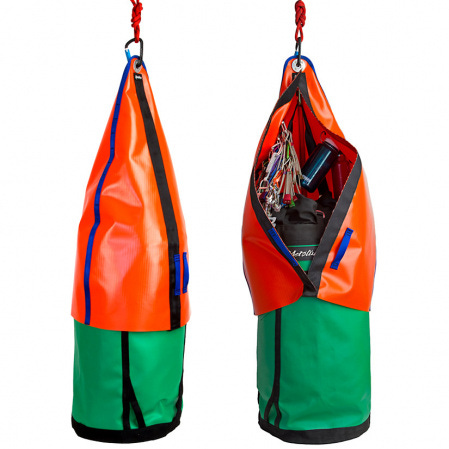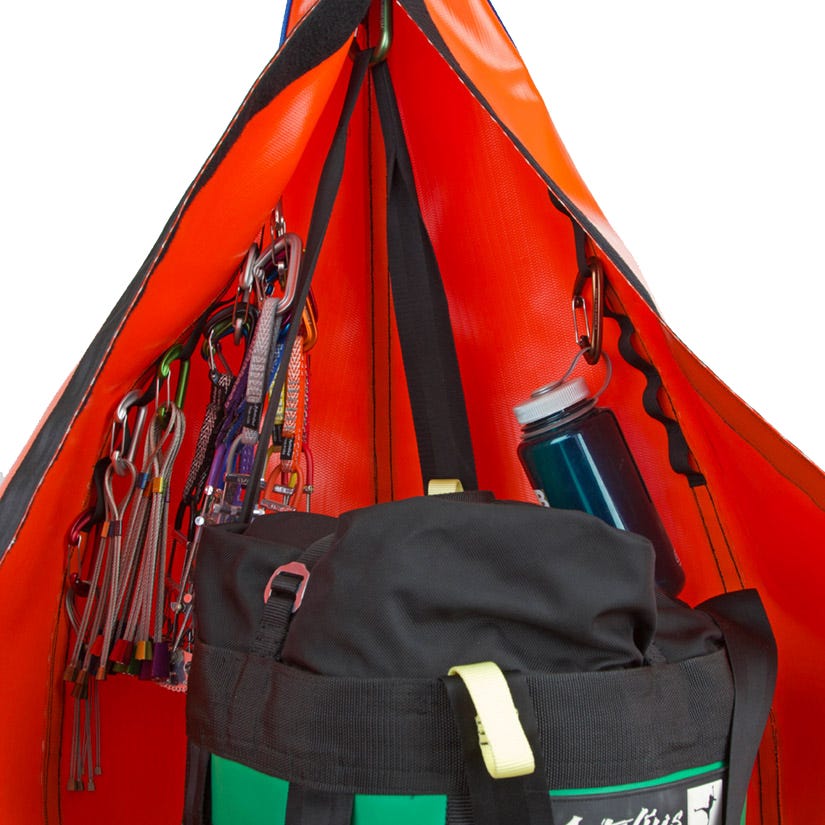There was a brief period in the 90s when there seemed to always be some new piece of big wall kit coming out, be it Black Diamond Peckers, Grappling hooks and Talons, Yates big wall harnesses and lanyards, or offset Aliens, all kit that really made big wall climbing much safer and easier (you could tick an 'A4', but really, with the right kit, it was 'A2'). I think a lot of this product development came about due to the often overlooked golden era in Yosemite climbing, when the US economy was booming, the valley was flush with crazy dot com money, with the free kit and sponsorship flowing into it like the Merced.
These days, there's not much new stuff for big wall climbing apart from the odd pieces from garage brands like Moses, Kop de Gas, Skot, Krukoniogi, and G7 (plus others).
So, it was a nice surprise to spot something new in big walling when looking through the Metolius site, namely, the Metolius Nose Cone. The blurb attached goes as follows:
The Nose Cone dramatically reduces hang-ups and has a stormproof covering for the haul bag. It has built-in daisy chains for better organisation, plus quick access to essentials such as water, food, clothes, and gear.
The cone weighs 1.45kg and costs $149 (£119). It is designed to fit large, medium, and small haul bags.
Looking at the design, it's easy to see the function of the Nose Cone, which is to create a uniform, angled snag/hang-up-proof bullet-shaped profile for a haul bag. This is a boon when hauling on vertical, off-vertical, slabs, snow, or through bushes and wall snagging.
But, like most innovative gear, the Nose Cone isn't new; in fact, it's ancient, and I've used several versions of it, some I've made myself (this is why you're often on shaky ground when you claim you 'invented' some piece of climbing kit).
If we go all the way back to the 1970s, you had the fibreglass hauling dome, which fitted over the top of the bag to avoid hang-ups. I've never seen one of these, but I expect fibreglass is not ideal for big-wall use (have you ever had a fibreglass splinter in your finger?).
Then you had the Norwegians, who employed HDPE plastic cones that fitted over their haul bags and barrels when big wall climbing in Antarctica and the Himalayas. This was an absolute game changer on mixed objectives, but one seemingly lost by Yosemite's big wall climbers.
I have made several of these HDPE cones over the years. They can be made pretty cheaply from a flat piece of 2mm HDPE sheeting, cut into a cone, and then secured with wing nuts (this is also ideal for lining your bag).
I even made a foam-backed version out of vinyl fabric, very much like the Metolius model, when I tried the Russian route on the Eiger (maybe I should sue Metolius for royalties!).

So, as you can guess, I was a fan of the Nose Cone long before it came on the market, but I was glad to see it appear, as it’s something that more big wall climbers should be using. Also, there is always a lot of hassle and cost to DIY gear, and you often fail to factor in the cost of your time (although learning new skills is always worth the investment), as you tend to have to make cool kit several times over to make it right.
The cone features a solid connector piece (aluminium) bolted into the Durathane, into which you clip the haul line, swivel, or tie in directly (Retraced Bowline or rethreaded Alpine Butterfly). The bag's long strap is attached to the bottom of the piece (using a locker or quick-link). The Durathane fabric then wraps around the bag and is secured with wide velcro. The inside of the cone features a number of clip-in points/daisy chains, allowing you to secure kits, bags or racks.
The combination of stiff Durathane and the four haul bag straps, which act like solid ribs, creates a solid bullet. They make it very hard for the bag to hang up under roofs or overlaps, but maybe more importantly, they reduce the risk of the straps catching on gear as you haul.
Some climbers might think, "The routes overhanging, I don't need it", but even the steepest walls feature low-angle sections or roofs that need to be hauled around, and all generally finish on some bushy slab nastiness. For climbers on less than vertical walls, such as the Nose, or the hauling hell that is Lurking Fear, having a bullet-shaped bag is really going to improve your chances of avoiding a hauling meltdown (I think the majority of Nose bails, which is how about 70% of attempts end, are due to hauling issues). Yes, experience helps you overcome a lot of problems, but if you have limited experience, then avoiding the problem is best.
Suppose you have multiple bags on off-vertical ground. In that case, I think having the bags in a train (a chain of bags one on top of the other), with the Nose Cone on the top bag, works, as usually once the top bag is over a hump, the rest will follow. Still, on a route like the Nose, if you have more than one haul bag, you've got too much (unless your goal is to master hauling).
What I like most about the Nose Cone is not really its stuck resistance, which you tend to just take for granted after a pitch or two (a "luxury becomes a necessity" sort of deal), but your ability to extend the capacity of your haul bag. With the cone in place, you can add about 30+ litres of extra stuff on top of the bag, nestled within the cage of the haul straps. This is generally stored in stuff sacks clipped into the suspension or clip-in points and allows you to avoid having to take along an extra haul bag just to hold all the bits and bobs of crap you always end up carrying (I'll often flag my ledge low down and use the ledge bag to have extra water etc.). For me, when soloing, the best way to avoid hauling traumas is to avoid extra bags, so a one-bag wall is ideal (on my recent solo of The Shortest Straw, I used one bag for a 10-day ascent, but that was only because I only had five days supplies!).
So, is the Nose Cone a worthy entry to the big wall kit list? Well, I know that some climbers will quibble at the price, but such climbers are clinging to 1990s costs. In a world in which people think dropping $1000 on a China-made phone is no big thing, having an affordable, solid, US-made, high-quality component piece of kit that will last a hundred years price at 1990s prices ($149), makes me wonder if Metolius are actually a climbing company or a front for laundering money for organised crime?





